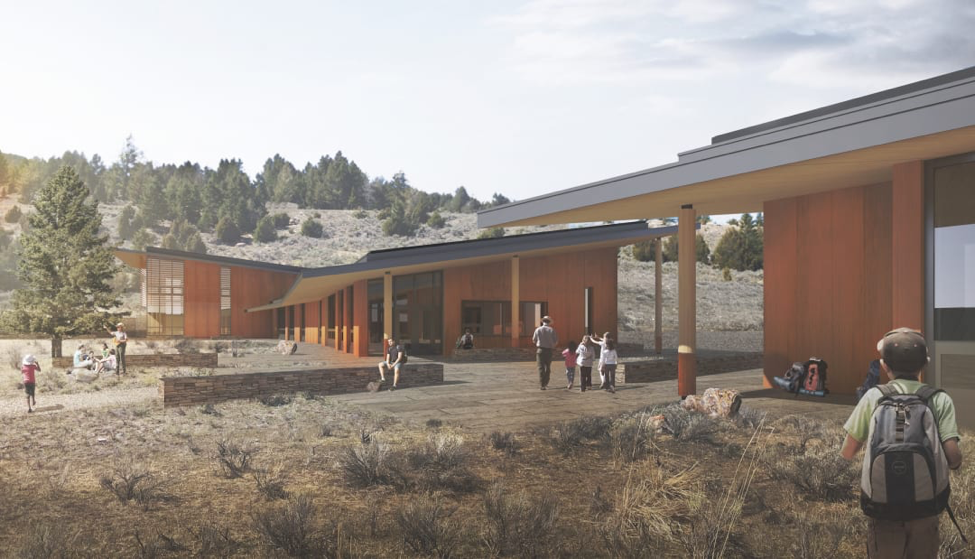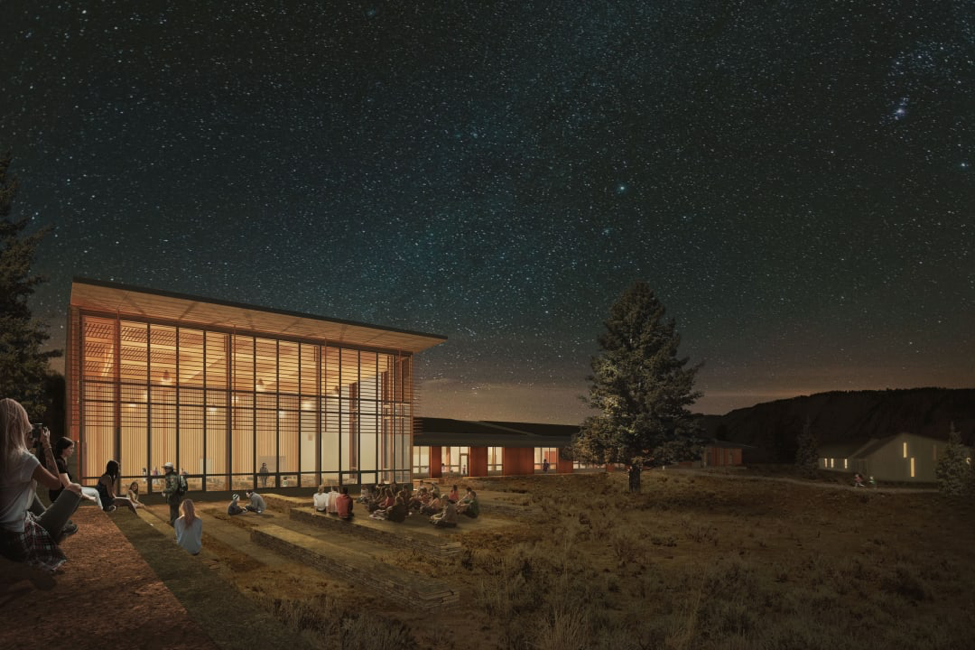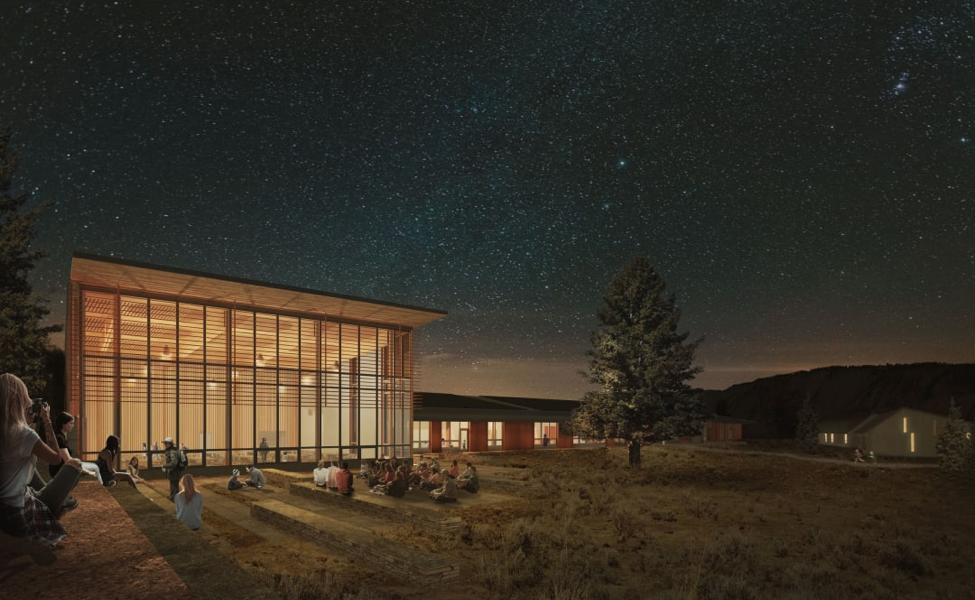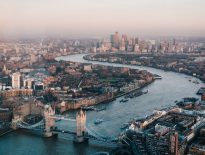When leaders at Yellowstone National Park decided to update the Youth Conservation Corps Campus, they had all of the typical challenges of a multi-building commercial project — plus the added obstacles of a harsh winter climate, views that needed to be both embraced and protected, and even wildlife. Hennebery Eddy Architects navigated these challenges to win the project. The Pacific Northwest firm designed the project to both the Living Building Challenge (LBC) and Passive House standards, proving that cutting edge and practicality can go hand in hand to meet and exceed design requirements.
A design competition hosted by the National Park Service and partner Yellowstone Forever challenged architects to update or replace Yellowstone’s existing aging youth facilities, which play host to educational programming encompassing curriculum-based learning, summer work camps, field trips, and more.

Hennebery Eddy’s winning design includes 10 buildings across the 17 acres, featuring a signature main building with a dining room/multipurpose hall, offices and classrooms, five dormitories, and a storage facility for backcountry gear that also houses on-site wastewater treatment. The team sited each building to maximize views and minimize disruption of the topography.
Though designing to LBC criteria was certainly a risk, it felt like a natural choice, said Will Ives, principal at Hennebery Eddy.
“What stood out is that the National Park Service and Yellowstone Forever have similar missions around the idea of preservation and sustainability and the fact that both support this program for youth and environmental education,” Ives commented. “We said, ‘This needs to be the most sustainable campus it can be. Really, it should be regenerative, something that gives back more than it takes.’”
Once complete, the Yellowstone Youth Campus is expected to be the first LBC-certified project in a national park.
Practical Sustainability
Hennebery Eddy’s architects brought a comprehensive approach to navigating the demands of the LBC. With Yellowstone’s location and ownership, one unique constraint was to maintain the stunning views best appreciated through broad expanses of glass.
“We tried to balance practical sustainability,” Ives said. “We worked hard to get the building sited perfectly for passive design. Solar heat gain was something we needed to take advantage of. Otherwise we would need more photovoltaic panels than could fit on top of the buildings.”
As such, the main structure features a sloping shed roof, concentrating most of the building’s glass to a south-facing side. A dramatic expanse of floor-to-ceiling Andersen E-Series™ aluminum-clad wood windows delivers breathtaking views while broad southern eaves provide passive shelter during the summer. Not only is the north-facing exposure minimized, but it angles into the adjacent hillside. On the other buildings, deep porches provide passive solar and passive ventilation.
A high-performance envelope, its use of mineral wool insulation to achieve R-54 walls and R-72 roofs lowers energy needs as much as possible, helping to shrink the size of the photovoltaic array to 400 kW (which will provide up to 120 percent of the project’s power needs). The zinc roofs, weathering Corten steel skins, and local stone have low reflectance while blending against the high desert backdrop.
Unique Challenges
Indeed, blending in was crucial to addressing another one of the park’s design criteria: preserving the viewshed, particularly from the nearby Grand Loop Road. Building the structures into the hillside below the road, along with the vegetated roofs, high desert color schemes, and natural materials, help the buildings merge with the landscape rather than draw attention.

“You want to feel like you’re in Yellowstone the whole time,” Ives said, noting that the firm conducted numerous studies and simulations to help the National Park Service understand the viewshed impacts.
The location also brought a rarer consideration: wildlife. The team had to address questions such as ‘how many times a bison can rub against an Andersen window before the finish begins to rub off’ and consider how to manage potential grazers on the green roofs. In addition, due to the proximity to natural thermal features, ground source heating was not an option and the continual threat of wildfires needed to be considered when designing the HVAC system. Cross-laminated-timber roofs and floors, which can be installed much more rapidly than traditional framing, help accommodate the park’s short construction window.
Andersen also had to make modifications. In order to meet the stringent Red List and sustainable resource extraction requirements of the Living Building Challenge, the manufacturer changed some components within its windows where Red List chemicals were present. Andersen engineers worked collaboratively with its suppliers, the Hennebery Eddy team, and the International Living Future Institute to find solutions that would accommodate the LBC requirements without sacrificing performance or aesthetics.
Andersen’s team also sourced FSC-certified Douglas fir to meet the architects’ requests and the Living Building Challenge requirements.
“There are certainly supply chain and engineering challenges that go along with making a window or door LBC Red List compliant,” said Susan Roeder, Andersen’s strategic account manager for community. “It’s been an honor for Andersen to join in the thought-leadership and innovation of the Yellowstone project. We have had great partners along the way and look forward to continuing to support deep green building projects such as those seeking Living Building Challenge certification.”
Roeder also noted that Andersen’s engineers stepped up to the challenge of modifying products to meet project needs at every turn. “The collaboration of our product engineers and supply chain partners was pivotal to the project. We learned a lot about our product chemistry and what levers we can pull to meet the needs of an ever-changing market.”
The windows are just one component of a cohesive system of materials that will work together to balance efficiency, livability, durability and practicality, culminating in a space that will inspire future generations to learn about, appreciate and protect what Yellowstone has to offer.
Learn more about Andersen Windows & Doors and its products, long-standing collaboration with Yellowstone and sustainable practices.



